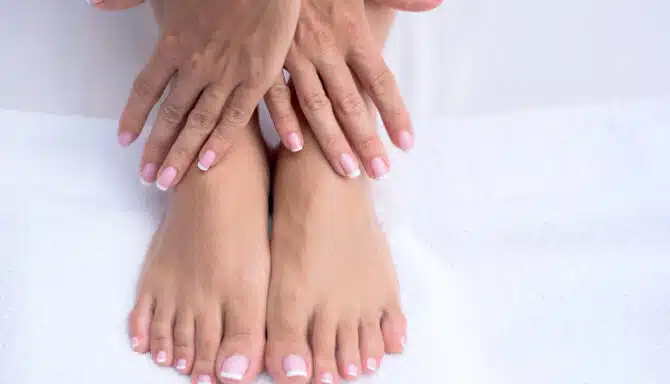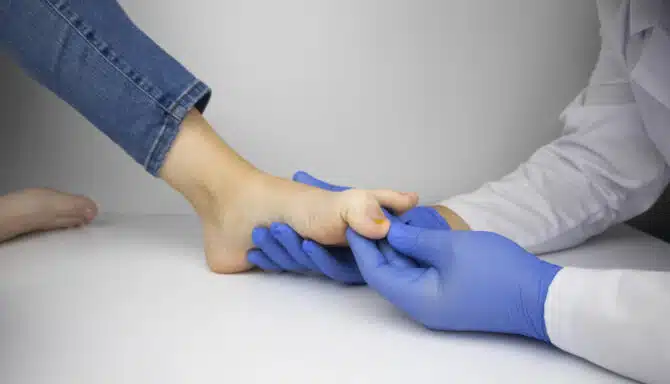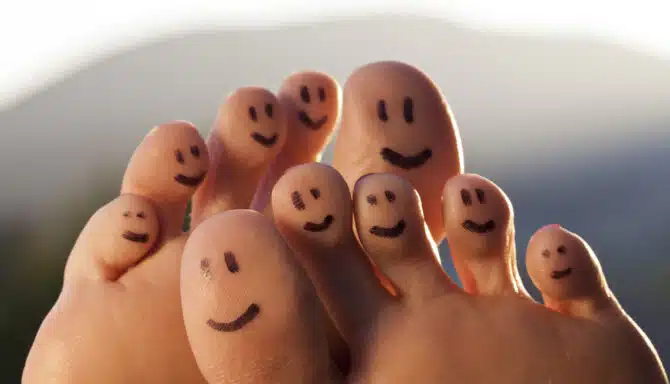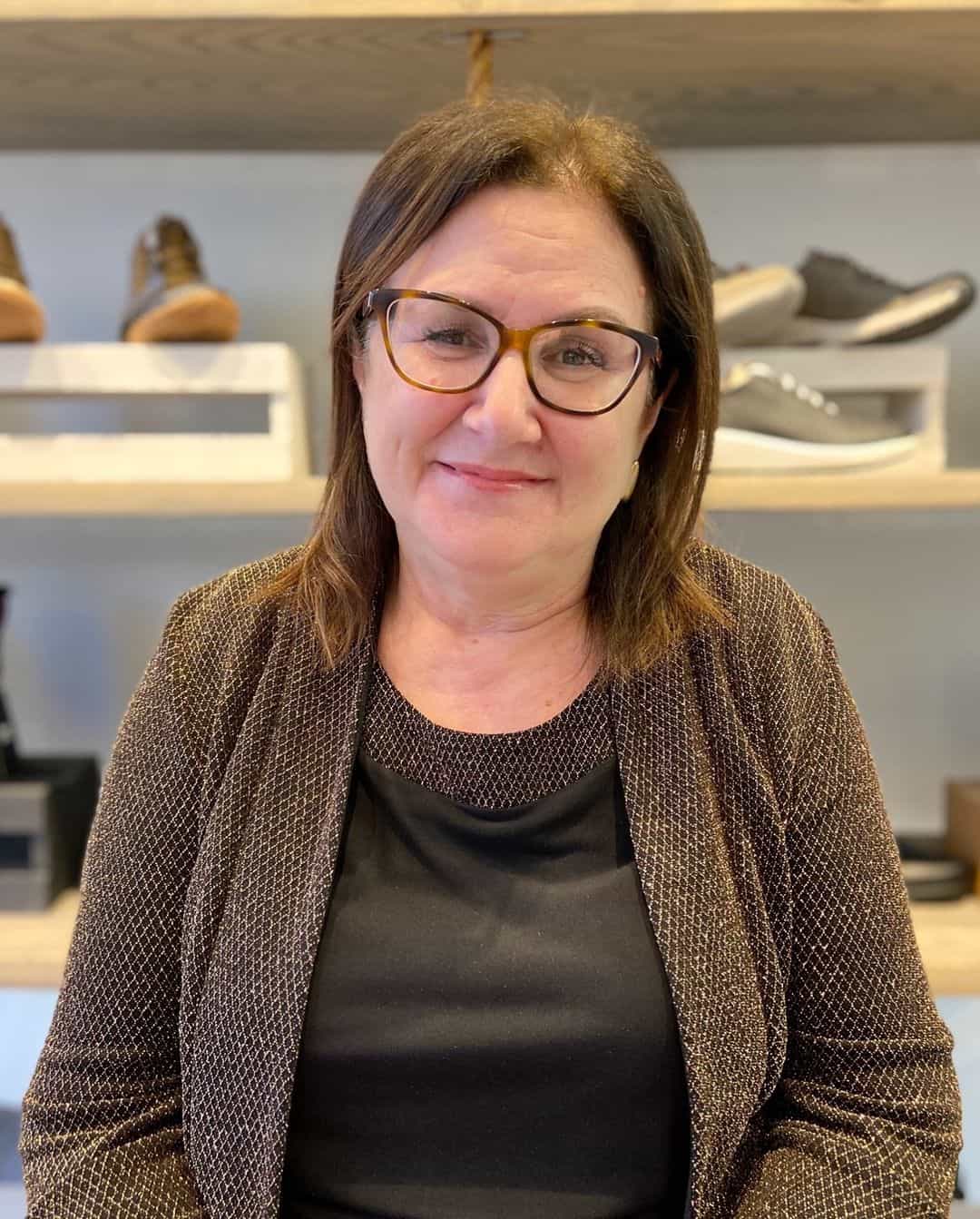July 24, 2025
Running is great for your overall health but your toenails might disagree. Many runners deal with painful or unsightly toenail problems, especially after long distances or hill training. Issues are so common that "runner's toenails" is a commonly used term to describe all the toenail damage. Understanding how running impacts toenail health can help you prevent injury and keep your feet in peak condition.
View this post on Instagram A post shared by Feet First Clinic (@feetfirstclinic_)
Common Toenail Issues Runners Experience
Black Toenail from Running (Subungual Hematoma): One of the most recognizable issues, a black toenail develops when repeated impact causes bruising or bleeding under the nail. It’s often due to shoes that are too tight or downhill running.
Toenail Lifting or Falling Off: Constant pressure on the nail bed can cause nails to lift or fall off completely, especially after a marathon or long run. This is usually painless, but it takes months for the nail to regrow.
Thick Toenails After Running: Repeated trauma can lead to thickened toenails, which may resemble fungal infections. This thickening is the nail’s response to long-term micro-damage and may become permanent if untreated.
Ingrown Toenails: Tight shoes or improper nail trimming can lead to ingrown toenails, which are common among runners and can become infected if ignored.
What Causes Running-Related Toenail Damage?
Improper shoe fit: Shoes that are too tight, too loose, or worn out can lead to friction and trauma.
Long toenails: Long nails hit the front of the shoe with every stride, increasing the risk of bruising or lifting.
Downhill running: Increases the impact on the toes.
Sweaty feet: Create a moist environment that can encourage fungal growth.
Inadequate socks: Thin or poorly fitted socks allow for extra movement inside the shoe.
Runner’s Toenail Care: Prevention Tips
Trim your nails regularly – Straight across, not too short, and never rounded at the corners.
Wear proper footwear – Choose shoes with about a thumb’s width of space at the front, and consider a running-specific fit.
Choose the right socks – Moisture-wicking and snug, with no bunching or seams that rub.
Replace shoes as needed – Most running shoes last 500–800 km. Worn-out soles contribute to poor foot mechanics.
Moisturize your feet – Prevent cracking and fungal buildup with a good daily foot care routine.
When to See a Foot Specialist
If your "runner's toenails" are persistently discoloured, painful, or thickened, it’s time for a professional assessment. What seems like a harmless black toenail from running could be a fungal infection, ingrown nail, or even an injury needing care. A chiropodist or foot specialist can safely treat nail trauma, provide custom foot care advice, and help you run pain-free.
View this post on Instagram A post shared by Feet First Clinic (@feetfirstclinic_)
Final Thought
You train hard so don’t let toenail trouble slow you down. By caring for your feet proactively, you can avoid common nail issues and keep running comfortably year-round.
April 10, 2025
Curved toenails can indicate various underlying toenail conditions, each with unique causes and additional characteristics. They also don’t always look the same. Toenail curvature issues can range from having a severe Ram’s Horn toenail, accompanied by other symptoms like thickening and discoloration, or small pincer nails that pierce your skin. Let’s learn about curved toenail causes, and most importantly, how a chiropodist or podiatrist can treat curved toenails at a foot clinic so complications don’t arise.
Why Do Toenails Curve?
https://www.youtube.com/shorts/Z6VYvI6CJQs
To understand the best ways of preventing curved toenails, it’s important to learn how healthy toenails grow. They should naturally grow forward in a slightly arched but mostly flat shape, following the contour of the toe. This process begins in the nail matrix, the tissue under the skin at the base of the nail, where specialized cells produce layers of keratin—the protein that makes up the nail.
As new cells form, older cells are pushed outward, harden, and form the visible nail plate. Ideally, the nail grows evenly and straight across, guided by both the shape of the matrix and the direction of mechanical forces applied to the toe, like walking or wearing shoes. The nail bed beneath provides support and helps keep the nail anchored and flat as it grows. A balance between nail thickness, width, and surrounding skin tension is key to maintaining this typical shape.
Toenails start to curve when something disrupts this balance.
Repetitive Trauma from Ill-Fitting Footwear
One common reason is uneven pressure and toe crowding. Tight footwear or repetitive trauma can push the nail’s edges downward or inward over time. That’s why one of the best ways of preventing curved toenails, or virtually all foot conditions for that matter, is purchasing and wearing only shoes that fit properly, allow your toes to splay comfortably, and have ample cushioning, arch support and shock absorption. It’s better to have a small selection of solid, high-quality shoes that support foot health than several pairs of low-quality, poorly designed shoes that cramp your toes.
https://www.youtube.com/shorts/rwNLRZ-MN_M
Genetics
Genetics also play a role in abnormal toenail growth; some people naturally have a more curved nail matrix or a narrower nail bed, both of which can encourage curling. If keratin production is uneven—say, one side of the nail grows faster than the other—the nail can begin to twist or curve as it extends.
Underlying Health Conditions
Inflammatory conditions, infections, poor circulation, or chronic diseases like diabetes can also interfere with normal nail growth by altering cell turnover in the matrix or causing changes to the skin and tissue around the nail. As a result, curved toenails are often not just a cosmetic issue—they can signal deeper structural or health-related concerns.
Curved Toenail Causes
Whether your curled toenails are the result of a sinister condition or simply a genetic growth pattern you’ve inherited, preventing them from getting worse is key. No matter the cause, proper trimming (straight across with simple nail clippers) and wearing shoes that fit well are two of the best things you can do from home to prevent painful complications and live life as comfortably as possible. Below you’ll find some of the most common causes of curved toenails:
Ingrown Toenails (Onychocryptosis)
Ingrown toenails are tricky as they look deceptively mild. But complications, like painful infections, can arise if you ignore them. They develop when the edge of a curved toenail grows into the surrounding skin, causing swelling, redness, and sensitivity. They can look curved, but they also look like a small “extra nail” on the edge of the main nail. It most commonly affects the big toe, and naturally curved toenails (involuted nails) are more likely to become ingrown because their growth pattern is already unusual.
Trimming the nails too short or rounding the edges can also encourage the skin to fold over the nail edge, allowing it to grow inward instead of outward. Repeated pressure or trauma from sports, stubbing the toe, or restrictive footwear (in the toe box, like narrow, pointed high heels) can also disrupt normal growth and set the stage for an ingrown nail to form.
https://www.youtube.com/shorts/B5a3yIgokh8
Pincer Nails (Trumpet Nails)
Classified by podiatrists and chiropodists as “the most painful type of ingrown toenail,” pincer nails, or trumpet nails, occur when the sides of the toenail curve inward toward each other, sometimes so dramatically that the edges look like they want to meet underneath the toe!
This shape creates a pinching effect on the nail bed and surrounding tissue. While some people are born with a naturally curved nail structure that gradually tightens over time, others develop this condition due to external pressures. Long-term use of tight shoes, particularly those with narrow toe boxes, is a major contributing factor. Certain systemic conditions, such as autoimmune disorders or circulatory problems, may also affect the nail matrix and contribute to this unusual curvature. Additionally, aging can play a role, as nail shape and growth patterns tend to change over time.
Onychogryphosis (Ram’s Horn Nails)
View this post on Instagram A post shared by Feet First Clinic (@feetfirstclinic_)
Onychogryphosis is a condition where the toenail becomes dramatically thickened and begins to grow in a distorted, curved, or spiraled shape that resembles a ram’s horn. It often affects the big toe and progresses gradually over time. The nail’s irregular growth is usually the result of uneven cell production in the nail matrix, where one side grows faster than the other.
The most common causes include repetitive trauma (like years of wearing ill-fitted shoes), long-standing fungal infections, or neglect of nail trimming. It’s more frequently seen in older adults or individuals with limited mobility who may struggle with basic foot care. Certain systemic conditions, including psoriasis and vascular disorders, may also interfere with healthy nail growth and lead to this thickened, curved form.
Curved Toenail Pain Relief and Solutions: Nail Disorder Treatment
Toenail curvature can cause pain and nagging discomfort that disrupts your daily life. Remember, the nail should not be growing this way, and it’s up to you to take the first step towards finding a solution. Chiropodists and podiatrists offer several effective treatments to address curved toenails, tailored to the severity and underlying causes. Below are some common treatments available at foot clinics:
Proper Fitting Footwear
Wearing shoes that are the correct length 0with a wide toe box is crucial for preventing and alleviating discomfort associated with curved toenails. Footwear that allows ample space for the toes reduces pressure on the toenails, minimizing the risk of them growing into the surrounding skin. Properly fitting shoes not only aid in preventing the development or worsening of curved toenails, but also provide some pain relief for existing conditions that need accommodation. Ensuring that shoes complement the natural shape of the foot without squeezing or compressing the toes is a simple yet effective measure in maintaining toenail health.
Medical Pedicures
Medical pedicures are performed by trained chiropodists or podiatrists and focus on the health and hygiene of the feet and nails. Unlike cosmetic pedicures, these procedures address underlying issues and focus more on nail maintenance and health than aesthetic appearances (although the nails always look clean and fresh afterwards!). During a medical pedicure, the specialist will carefully trim and reshape the toenails using sterilized instruments, reducing the risk of further complications.
They are a common treatment for people with diabetes who cannot cut and clean their nails properly without assistance, and who need an extra set of eyes and expertise to spot abnormalities.
OnyFix Nail Correction System
The OnyFix system is a non-invasive, highly innovative, and pain-free treatment designed to correct curved toenails—especially ingrown toenails. It involves applying a specialized composite material to the nail, which hardens and acts as a brace, guiding the nail to grow in its natural shape without exerting direct force. This method is suitable for various nail shapes and is particularly beneficial for patients seeking an alternative to surgical interventions. The Onyfix system allows individuals to continue their daily activities without restrictions, including swimming and wearing nail polish.
https://www.youtube.com/shorts/LoCcoKOhV7E
Nail Avulsion Surgery
In severe cases, such as with ram's horn toenail, surgical intervention may be recommended. This procedure involves the partial or complete removal of the affected toenail under local anesthesia. By removing the deformed nail, the underlying tissue can heal properly, and a healthier nail may regrow. Alternatively, a solution called phenol may be used to prevent nail regrowth.
February 20, 2025
Toenails are more than just a cosmetic feature; they’re protective shields that provide insight into overall toenail health, general health and well-being. Their shape, texture, and condition can indicate underlying issues, simple genetic traits, or the effects of lifestyle habits. In this article, we will explore the various types of toenails based on shape, thickness, texture, as well as medical and foot conditions.
How do Toenails Grow?
Nails grow from a specialized area of skin called the nail matrix, located beneath the cuticle at the base of the nail. This matrix contains rapidly dividing cells that produce keratin, a tough protein that forms the structure of the nail. As new cells are generated, older cells are pushed forward, gradually hardening through a process called keratinization.
The visible part of the nail, known as the nail plate, rests on the nail bed, which supplies it with nutrients and oxygen through a network of capillaries. The lunula, the pale crescent-shaped area at the base of the nail, is the visible portion of the matrix, where active growth occurs. Healthy nail growth depends on factors like blood circulation, nutrition, and overall health, with fingernails typically growing faster than toenails.
You can learn more about toenail anatomy here.
Toenail Shapes
https://www.youtube.com/shorts/Z6VYvI6CJQs
Toenails can naturally grow in different shapes due to genetic factors, footwear, medical conditions, and nail care routines. Below are some common toenails types (and some not-so-common types as well).
1. Normal (Flat or Slightly Curved) Toenails
Healthy toenails are typically flat or slightly curved, with a smooth surface and a light pinkish hue. They are neither too thick nor too brittle and grow evenly without splitting or cracking. If your toenails are entirely white with no pinkish hue, it may indicate anemia.
2. Curled Toenails
Some people naturally have curled toenails, where the edges curve gently. This shape is common and generally poses no issues unless the curvature is extreme, leading to a higher risk of ingrown toenails. Toenails that are excessively curled are called involuted toenails. It’s important to note you should never purposely try to round the sides of your toenails with toenail clippers — always cut straight across.
3. Square Toenails
Square toenails are straight across with sharp (but not too sharp!) or slightly rounded corners. This shape is often preferred for reducing the risk of ingrown nails, as it prevents the nail from growing into the surrounding skin. When you trim your nails, or get them trimmed by a specialist like a podiatrist or chiropodist during a medical pedicure, the end result should resemble a square shape on all nails.
4. Spoon-Shaped (Koilonychia) Toenails
Koilonychia is a term for spoon-shaped toenails that curve inward, creating a concave appearance. They can be a tell-tale way to discern the difference between healthy toenails vs. unhealthy toenails. This condition may be a sign of iron deficiency, anemia, autoimmune disease, lupus and poor blood flow to the hands and feet. Regular health check-ups and iron-rich diets can help prevent or manage this issue.
5. Clubbed Toenails
Clubbed toenails are thickened and rounded, often appearing swollen and accompanied by broadening of the tip of the toes. This can be a sign of chronic respiratory or cardiovascular conditions. If toenails appear clubbed, a medical evaluation is recommended.
Toenail Thickness & Texture
https://www.youtube.com/shorts/3JAUqiqJfus
The thickness and texture of toenails can reveal a lot about their health.
1. Thickened Toenails
Thickened toenails are often due to fungal infections. Thick nails infected with fungus require professional care from a Chiropodist or Podiatrist for proper maintenance and treatment because the infection is trapped and buried beneath the thickening — you won’t be able to treat it at home successfully. More on fungal infections later!
2. Brittle Toenails
Brittle toenails tend to split or crack easily and may be caused by dehydration, prolonged exposure to moisture, or certain medical conditions like hypothyroidism. Moisturizing and maintaining proper hydration can help prevent brittleness.
3. Toenails with Ridges
Vertical ridges on the toenails are common with aging and are usually harmless. Horizontal ridges (Beau’s lines) that look like indented grooves may indicate trauma, illnesses like viral infections or heart disease, severe stress and more. If Beau’s lines appear one day, you should talk to your family doctor. Subtle bands or stripes running along the nail can also be a signal you need to eat more protein.
4. Pitted Toenails
Pitted toenails have small indentations or depressions in the nail surface. This condition is often associated with psoriasis, eczema, or alopecia areata. Treating the underlying condition can help improve nail health.
The Most Common Toenail Conditions
Beyond shape and texture, toenails can be affected by various conditions that may cause discomfort or indicate a medical issue.
1. Ingrown Toenails
https://www.youtube.com/shorts/ZsFQqCkVf40
Ingrown toenails occur when the edge or corner of a toenail (usually the big toe) grows into the surrounding skin, causing pain, redness, and swelling. Ill-fitting shoes are a common cause; when shoes are too tight, they squeeze the toes together, increasing pressure on the sides of the toenail toenail, which disrupts the natural toenail growth pattern and forces it into the skin. High heels or narrow-toed shoes are particularly problematic because they alter the natural position of the foot and toe alignment, leading to more friction and pressure on the nail. This can result in the nail digging into the surrounding tissue, exacerbating the risk of infection and discomfort.
Additionally, improper trimming of toenails (e.g., cutting them too short or in a rounded shape) can also contribute to ingrown toenails, especially when combined with tight footwear.
Sometimes, there may be a genetic component to ingrown toenails. Certain nail shapes and growth patterns are hereditary (i.e.: involuted toenails) and can make a person more prone to developing ingrown toenails.
Chronic ingrown toenails may lead to infection, so it’s a good idea to visit a foot clinic at the first sign of discomfort. A Chiropodist can safely treat the ingrown toenail - often without surgery. OnyFix is also a great, modern option that’s completely non-invasive and stimulates a normal nail growth pattern. Both of these services are performed by foot care professionals.
https://www.youtube.com/shorts/LoCcoKOhV7E
2. Fungal Toenails (Onychomycosis)
Fungal infections can cause toenails to become thick, yellowish, and crumbly. This condition is common in people who frequently visit places where fungal infections breed, like moist, shared locker rooms and showers, public pools, nail salons and more. You can also get fungal toenail if you’re prone to athlete’s foot (which can then spread to the toenails). Older people, as well as people who wear shoes that trap foot sweat (and exacerbate it) are also more at risk. Keeping your nails clean and away from contagious areas is a key prevention tip.
Antifungal treatments and maintaining good foot hygiene can help control fungal infections, but it’s important to see a foot specialist to properly treat it. It is difficult to treat fungal infections on your own (unless it's in the very early stages) because the infection occurs beneath the nail, making it hard for topical treatments to penetrate deeply enough to eliminate the fungi. The nail acts as a natural barrier, trapping the infection in the nail bed and protecting the fungus from over-the-counter creams or home remedies. Sometimes our nails being so protective can be a double-edged sword!
A Chiropodist or Podiatrist can perform nail debridement (removing infected parts of the nail to allow proper treatment) before applying a prescription-strength topical antifungal medication.
3. Discoloured Toenails
Toenails can change colour due to various reasons. Here are some common discolourations that stray from the natural pink hue, and why it happens:
Yellow or brown nails: Often a sign of fungal infection and accompanied by nail thickening. This can also be caused by wearing nail polish; the chemicals are absorbed by the structure of the nail, causing yellow staining.
White spots: Can indicate several issues. They can happen due to minor trauma, kidney issues, yeast infections, cirrhosis, or they may signal something more innocent, like nutritional deficiency— often zinc. If your toenails are entirely white with no pinkish hue, it could possibly be anemia.
Black, red or purple: Generally caused by trauma (subungual hematoma). The dark colour is essentially bruising underneath the nail. People often notice a black toenail after stubbing it or dropping a hard object on it. Trauma can also cause toenail damage, like cracked toenails.
4. Detached Toenails (Onycholysis)
Sometimes your toenail can start to fall off, which can be alarming. Onycholysis occurs when the nail separates from the nail bed, often due to trauma, fungal infections, or psoriasis. Treatment depends on the underlying cause.
5. Ram’s Horn Toenails (Onychogryphosis)
This condition results in extremely thick and curved toenails that resemble a horn. It is more common in elderly individuals or those with poor circulation. Regular trimming and professional care from a chiropodist or podiatrist are essential for management.
January 30, 2025
Toenail conditions can cover a wide range of problems, each with its own set of symptoms. Typical causes and risk factors include wearing ill-fitting shoes over long periods, contracting contagious fungi, infections, cutting your toenails incorrectly, having poor circulation and more. Today we’ll talk about the 5 most common toenail conditions and what you can do to address each one. Nailed it!
5 Common Toenail Conditions
Ingrown toenails
Toenail fungus
Cracked/stubbed toenails
Discoloured toenails
Onycholysis
Risk Factors for Common Toenail Problems
Improper nail trimming, such as cutting nails too short or rounding edges.
Wearing tight or ill-fitting footwear that puts pressure on the toes.
Frequent exposure to damp or moist environments - this leads to fungal infections, which can spread and worsen without treatment.
Walking barefoot in communal areas, which increases exposure to fungi and bacteria.
Trauma to the toes, such as stubbing or dropping heavy objects.
Poor foot hygiene, leading to debris buildup and a more favourable environment for bacteria and fungi.
Genetics, including naturally curved nails or a family history of nail issues.
Poor circulation, which disrupts the natural toenail growth process and can lead to an array of toenail deformities and misshapen toenails.
Medical conditions like diabetes or peripheral vascular disease, which impair circulation and healing. It's extremely important to attend regular appointments with a chiropodist or podiatrist if you have diabetes as even deceptively minor issues, like cracked toenails or ingrown toenails, can turn into diabetic ulcers when ignored.
Psoriasis or other skin conditions affecting the nails.
Weak or brittle nails caused by aging, poor nutrition, or overuse of harsh chemicals (too many cosmetic pedicures).
Repetitive pressure on nails from activities like running or wearing high heels.
1. Ingrown Toenails
https://www.youtube.com/shorts/LoCcoKOhV7E
Ingrown toenails are one of the most common toenail problems, with some studies suggesting they affect 20% of patients who seek medical care for foot-related issues. They occur when the edges or corners of a toenail grow into the soft skin surrounding it. This leads to inflammation, swelling, and pain. The big toes are particularly prone to this condition due to their size and the pressure they endure during daily activities.
Nails grow from the nail matrix, a layer of tissue beneath the cuticle that produces keratin, the protein that forms the nail. Healthy nails grow straight outward, following the curve of the toe. However, if the nail is cut incorrectly, exposed to excessive pressure and toe crowding in shoes, or grows irregularly due to genetics, its edges can deviate and pierce the surrounding skin.
Once the nail edge enters the skin, the body identifies it as a foreign object. This triggers an inflammatory response, where blood flow to the area increases, causing redness, swelling, and pain. If bacteria enter the wound, infection may develop, leading to pus and further discomfort.
Treatment for ingrown toenails depends on the severity of the condition and the individual’s needs. For mild cases, conservative care such as warm water soaks, antibiotic ointments, and proper nail trimming can help alleviate discomfort and prevent infection. Professional treatments offer more targeted solutions.
OnyFix is a non-invasive option that uses a specialized band applied to the nail, gently guiding its growth to prevent future ingrown edges without the need for surgery. Medical pedicures, performed by a chiropodist or podiatrist, safely address ingrown nails by trimming and reshaping them with sterilized tools while maintaining overall nail health. For severe or recurrent cases, surgical interventions such as partial or total nail avulsion may be necessary to remove the problematic portion of the nail and ensure long-term relief. Consulting a foot care specialist is key to determining the most effective treatment plan.
https://www.youtube.com/shorts/ZsFQqCkVf40
2. Toenail Fungus
Fungal toenails occur when fungi infect the nail bed, causing changes in the nail's colour, texture, and thickness. The fungi thrive in warm, moist environments, which makes the toes a prime target, especially in people who wear tight shoes, sweat excessively, or walk barefoot in public areas. Over time, the nail may become discoloured (yellow, brown, or white), thickened, and brittle, and it may even begin to separate from the nail bed.
Fungal infections can be persistent and difficult to treat due to the fact they’re essentially stuck under the nail. This means professional intervention from a chiropodist or podiatrist is necessary.
https://www.youtube.com/shorts/jo9Ro-iGU2s
3. Cracked / Stubbed Toenails
Cracked and stubbed toenails often coexist. They occur when the nail becomes brittle and breaks, often due to factors like dehydration, excessive moisture, or external pressure from tight shoes. The nail’s keratin structure weakens, leading to splits or fractures. Stubbed toenails, on the other hand, happen when the toe is forcefully struck, causing immediate pain and potential damage to the nail, which includes cracking.
You can usually let your cracked toenails grow out naturally. If the nail is cracked due to sudden trauma and there is no other culprit at play, this will take about 6 to 8 weeks to start, and sometimes over a year to completely regrow properly. A chiropodist or podiatrist might be able to provide a remedy to encourage faster growth, and suggest the best footwear for your feet to avoid toe crowding and further nail damage.
In the case of complications or a more sinister underlying problem, a foot specialist may partially or fully remove the nail (avulsion) or apply dressing to the area to prevent infection.
https://www.youtube.com/shorts/lArn5KLnnSA
4. Discoloured Toenails
Discoloured toenails are more of a symptom than a problem. When the nail changes colour, it often reflects a problem with the nail, tissue beneath it, or your general health. Fungal infections, for example, commonly cause yellow or brown discoloration, as the fungi damage the nail and its growth. Trauma can also lead to discolouration, often presenting as a dark bruise (purple or black) due to blood pooling under the nail.
Nail Discolouration Causes and Colours:
Yellow: Fungal infections, thickening, aging.
Black: Trauma or bruising beneath the nail, potentially accompanied by blood pooling.
White spots: Trauma, fungus, allergies — generally harmless.
Bluish/Pale: Circulation issues, anemia, or other health conditions.
Treatment is difficult to discern as many factors may be causing discolouration. The best course of action is scheduling a foot assessment or nail care appointment with a chiropodist or podiatrist at a foot clinic.
5. Onycholysis
This is a term for when your nail starts to separate from the nail bed. It often coexists with toenail fungus, psoriasis or trauma/toe injuries. Depending on the cause, you may need a full course of fungal toenail treatment at a foot clinic. A Chiropodist or Podiatrist will determine what’s causing the problem and curate a specialized treatment plan. As mentioned before, the detached portion of your nail will usually grow back on its own if it's separated because of trauma.
https://www.youtube.com/shorts/QFWBwM6mGqM
Prevention Tips for Common Toenail Problems
Trim nails straight across and avoid cutting them too short.
Wear properly fitting footwear that allows adequate toe room.
Maintain good foot hygiene, including regular washing and drying of feet.
Avoid walking barefoot in communal areas to reduce the risk of fungal infections.
Keep feet dry, especially in winter, and use moisture-wicking socks to prevent fungal growth.
Protect toes from trauma by wearing protective footwear in hazardous environments.
Moisturize nails and cuticles regularly to prevent brittleness and cracking.
Avoid harsh chemicals, including acetone-based nail polish removers.
Monitor nails for discoloration, thickening, or unusual texture changes.
Seek professional care from a Chiropodist or Podiatrist if you suspect you have a fungal infection.
Seek professional care from a Chiropodist or Podiatrist if you notice persistent pain, redness, or swelling.
Schedule foot assessments and regular medical pedicures with a Chiropodist or Podiatrist so they can keep an eye on your feet — four eyes are better than two!
August 15, 2024
Whether they're discoloured, cracked, ingrown, curly, or on the verge of falling off, toenail anatomy can be fragile and our nails can do funny things. A less commonly discussed issue is a secondary toenail. Also known as an accessory toenail or petaloid toenail, a secondary toenail is a sneaky little extra nail twin that grows alongside or beneath the pinky toenail. This abnormal toenail growth can be concerning, so it’s natural to have questions.
Signs You Have a Secondary Toenail
It’s important to know the difference between an ingrown toenail and an accessory toenail.
First, ingrown toenails can grow on any toe, whereas a secondary toenail appears on the fifth, smallest toe.
Ingrown toenails are also far more common, and pierce the skin rather than growing alongside the nail.
Secondary toenails are thin in nature and often don’t cause pain, infection or swelling like ingrown toenails do (although it is possible).
Lastly, ingrown toenails form on the side of the nail unit, whereas secondary toenails grow underneath the proper nail.
What Causes a Secondary Toenail?
A secondary toenail is a rare phenomenon.
It often makes an unexpected appearance after trauma or injury to the nail bed. You may notice your nail growing differently after stubbing or hurting it. Chronic pressure from tight shoes or less-than-perfect nail trimming can also coax this extra nail into existence.
Do You Need Surgery For Secondary Toenails?
Studies show that the treatment of choice for this extra pinky toenail is an excision, especially if it’s infected. A partial or total nail avulsion from Toronto’s Feet First Clinic may be the solution you need, but you’ll have to schedule a proper foot assessment to determine the best course of action.
Treatment of accessory toenails targets the original toenail, not the second one. The second toenail should grow properly after the “main” nail is removed.
August 1, 2024
A toenail falling off can be uncomfortable and cause concern about damage to the toenail. The goal is to preserve the toenail's state to prevent further damage.
Fortunately, if you take a few proactive steps, you can reduce the discomfort and promote healing. Here are our six tips for managing a toenail on the verge of falling off.
1. Keep the toenail area clean and dry
Wash the toenail gently and often. We recommend using mild soap and water to keep it clean. Next, pat dry so as not to snag the toenail with a towel.
2. Cut the nail carefully and slowly
Use clean, sterilized nail clippers to remove any dangling or loose portions of the toenail. Cut straight across without digging into the surrounding skin. The goal here is to prevent further snagging or tearing down the road. Improperly cutting your nail may also increase your risk of an ingrown toenail.
In addition to trimming the toenail straight across, you should trim the toenail slowly. Don't over-cut it. Be patient with toenail growth. (It may take months to a year for a nail to fully grow out.) If in doubt, let our toenail specialists in Toronto trim your toenails for you as part of a medical pedicure.
3. Use a non-stick bandage to protect the area
We recommend applying a bandage or non-sticky wrap to your toe. (Adhesive can attach itself to the toenail and be difficult to peel off without grabbing onto it.) A protective layer keeps an otherwise exposed nail bed safe. Replace the bandage regularly and keep the area dry to promote healing.
4. Antiseptic ointment is your friend
Use an antiseptic ointment or petroleum jelly on the exposed nail bed to keep it moisturized and prevent infection. This may help soothe any discomfort from the loose toenail.
5. Choose comfortable and roomier footwear
You'll want to reduce pressure as much as possible to prevent a loose toenail from falling off. Given that we wear footwear so often, finding shoes with ample fit can help prevent further damage to the toenails.
6. Avoid intense activity
Reduce your activity level if it puts excessive pressure or strain on the affected toenail. For instance, running or high-impact sports like soccer could increase the risk of the toenail getting snagged or torn off. Give your toe some rest, and return to physical activity gradually.






